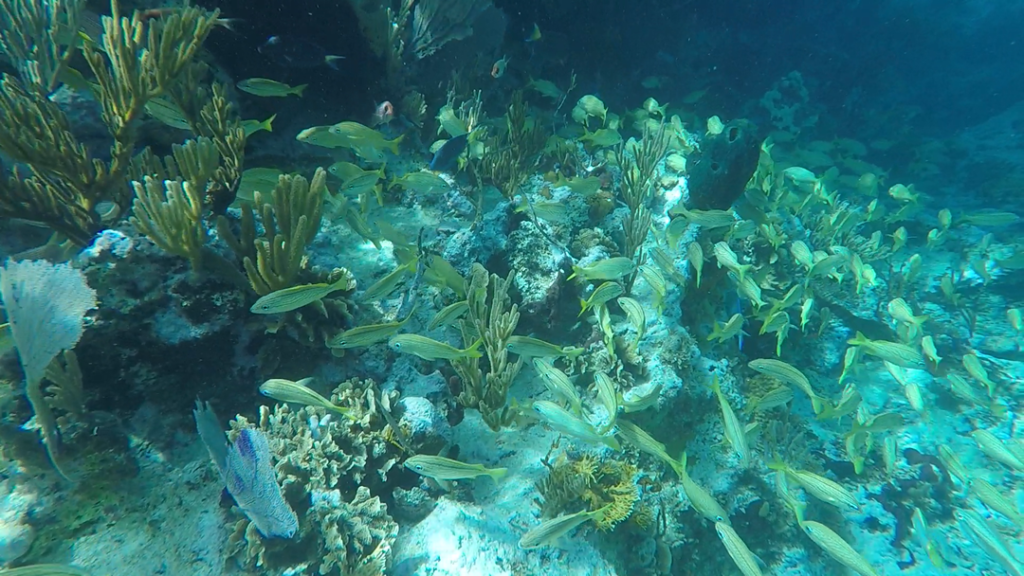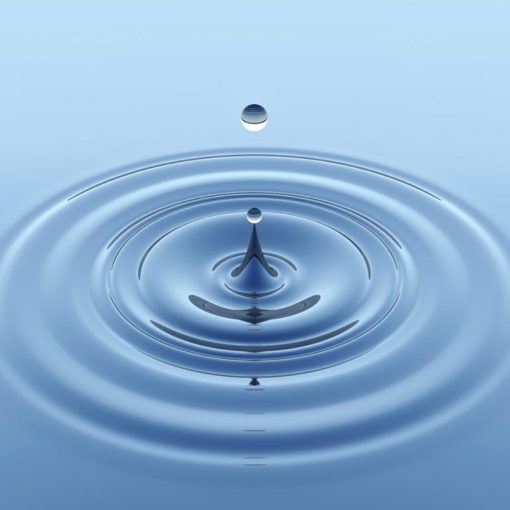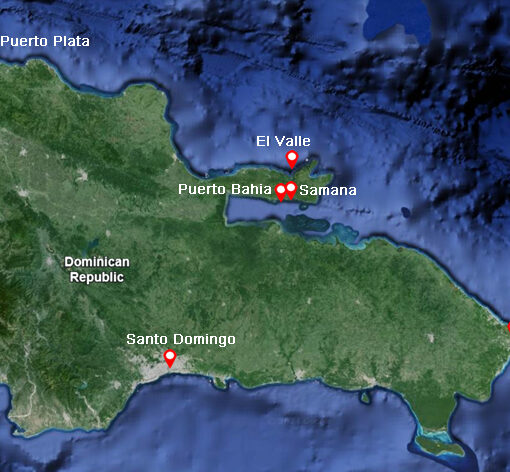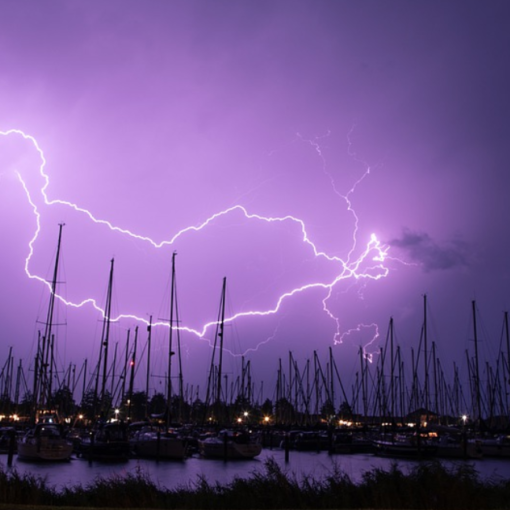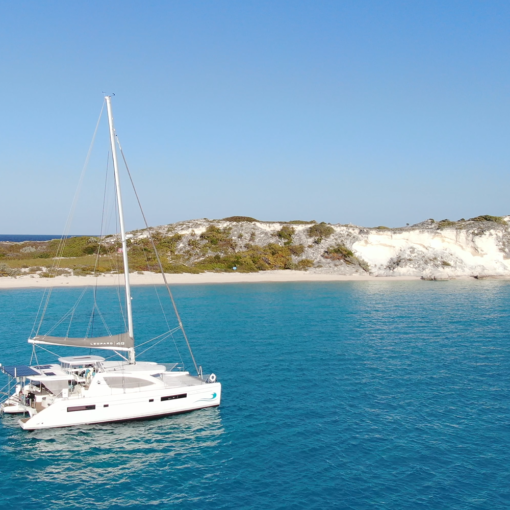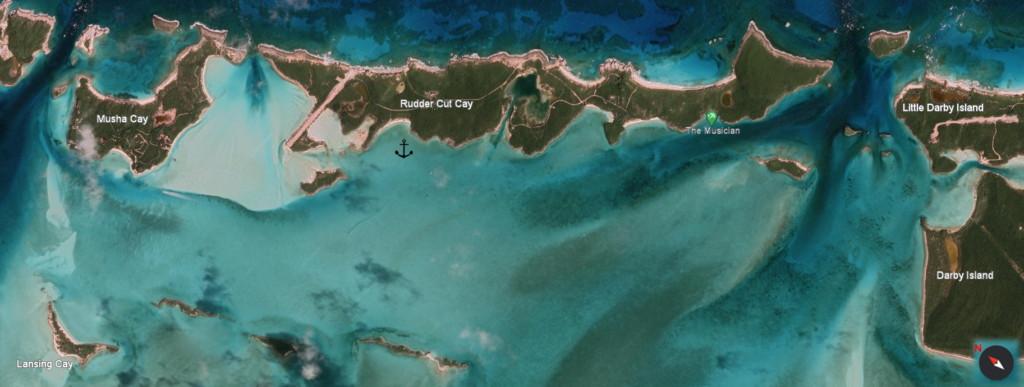
Leaving Great Guana Cay, we were now in the southern half of the Exumas and we love it. We’re unsure if that was because our learning had progressed or if that was because it truly is better, but our cruising experience finally began to resemble the tropical playground we had imagined.
Cave Cay
Our destination was Musha Cay and neighboring Rudder Cut Cay, but en route was the often advertised Mile-long Sandbar. We decided to drop anchor at Cave Cay and head over at low tide, which was at 3:30pm that day.
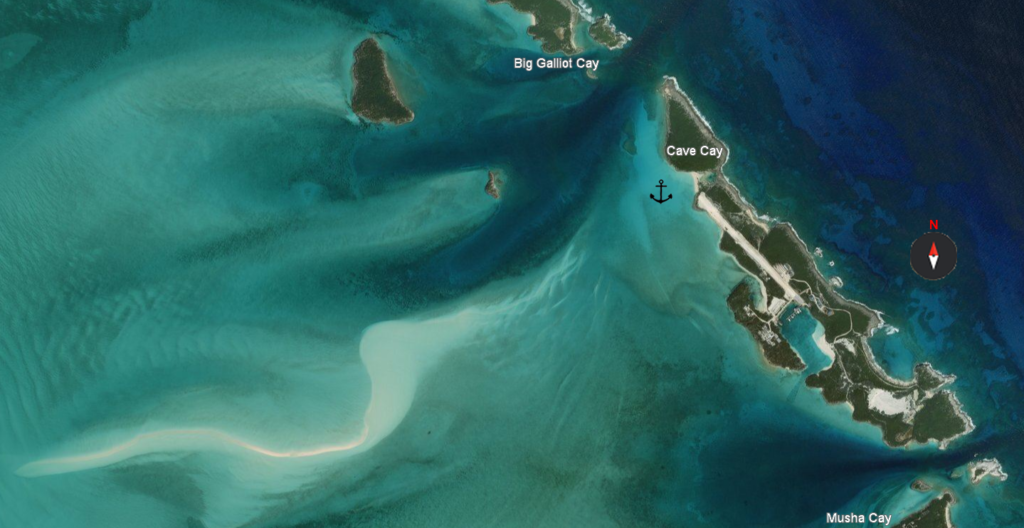
We went a half-hour early and played around for at least an hour. To our dismay, the sandbar never materialized, dropping to one foot at its shallowest. We thought maybe a lower low-tide was needed, but that day was 0.7 feet, the lowest all week. I then did some searching and found a 2018 review saying the sandbar was gone due to a recent hurricane. All of the other reviews were old, and the only other material promoting the sandbar came from Bahamas tourist sites. This was a bust.
The anchorage itself is beautiful and well-protected if you can snuggle in towards the beach. It’s a good stop-over for waiting to exit Galliot Cut immediately to the north.
Rudder Cut Cay
We followed the shallow route south from Cave Cay, past a very narrow stretch in front of the Musha Cay resort dock, in search of our next anchorage. There is a small area across the channel from Musha Cay, but we felt this was too exposed for the wind conditions on the horizon. Continuing down the length of Rudder Cut Cay, we tried nosing into the small bay just above the caves but backed out inches from hitting bottom. The most popular anchorage is around the corner south in front of the cave often called the Dinghy Garage. This felt very exposed to the swell and we experienced strong current coming from Rudder Cut further south. What to do? We turned around and dropped anchor in Rudder Cut Cay’s north anchorage, a very shallow beachfront, but protected with no discernable current. We would be the only ones there for the next week.
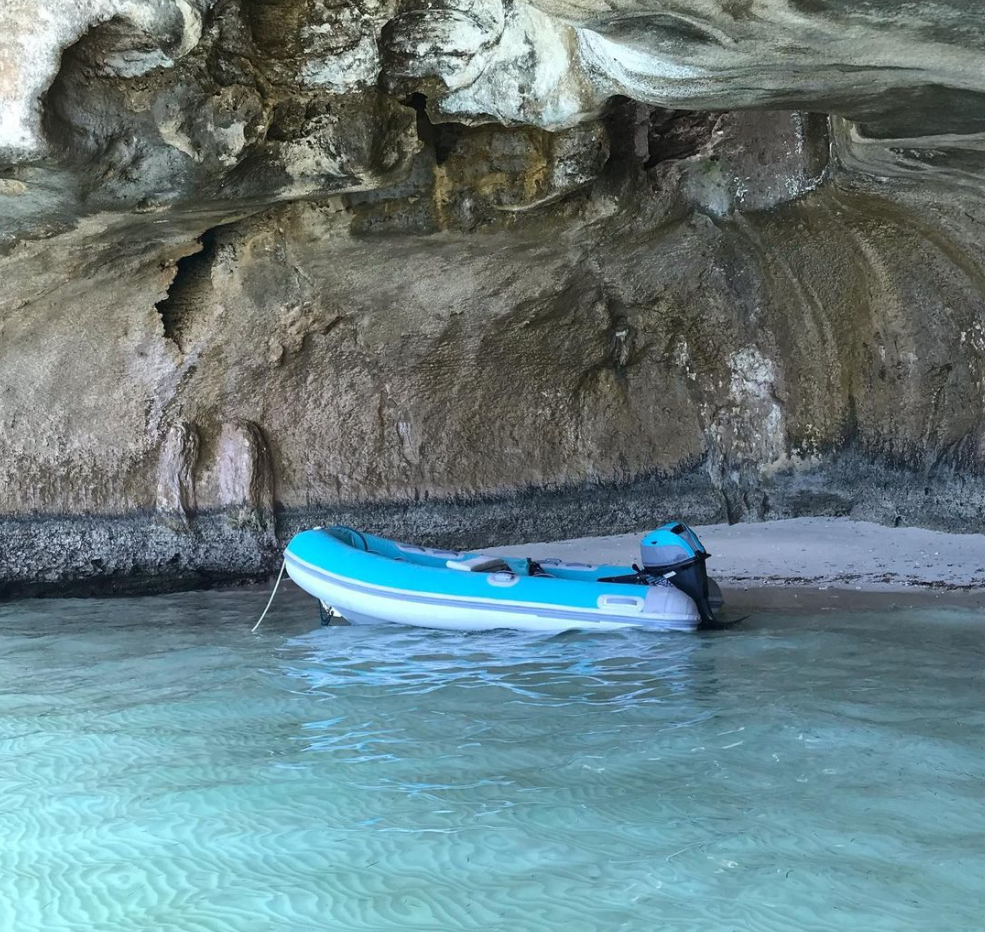
The Caves
The southern anchorage backs to a cave, with beaches on either side. A beach appears in the cave at low tide, making it look like a great place to park and thus the name Dinghy Garage. Very cool spot!
The Musician
The Musician is a stainless steel sculpture depicting a mermaid leaning against a mirror-finished full-sized replica of a Steinway Concert Grand piano. It was commissioned by David Copperfield and crafted by English sculptor Jason deCaires Taylor, based on a story Copperfield wrote about a tragic romance between a mermaid and a sea captain. Installed in 12-15 feet of water in 2011, it is one of the standard stops for all tour boats in the area.
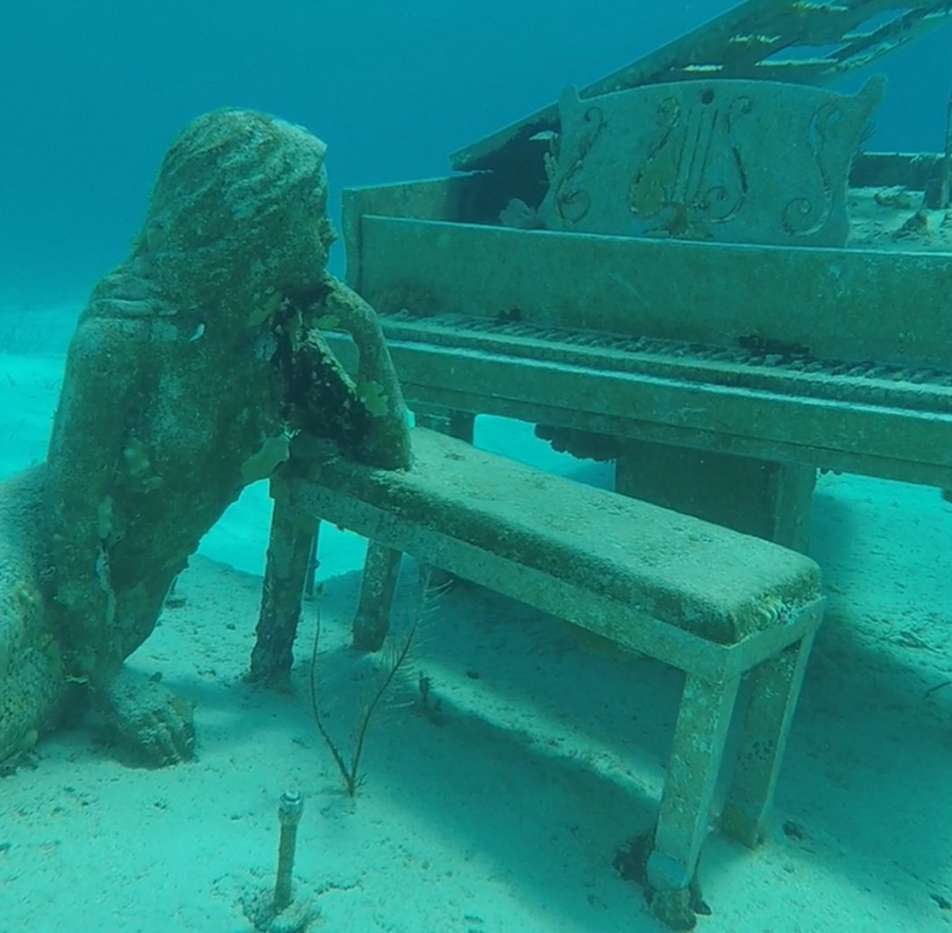
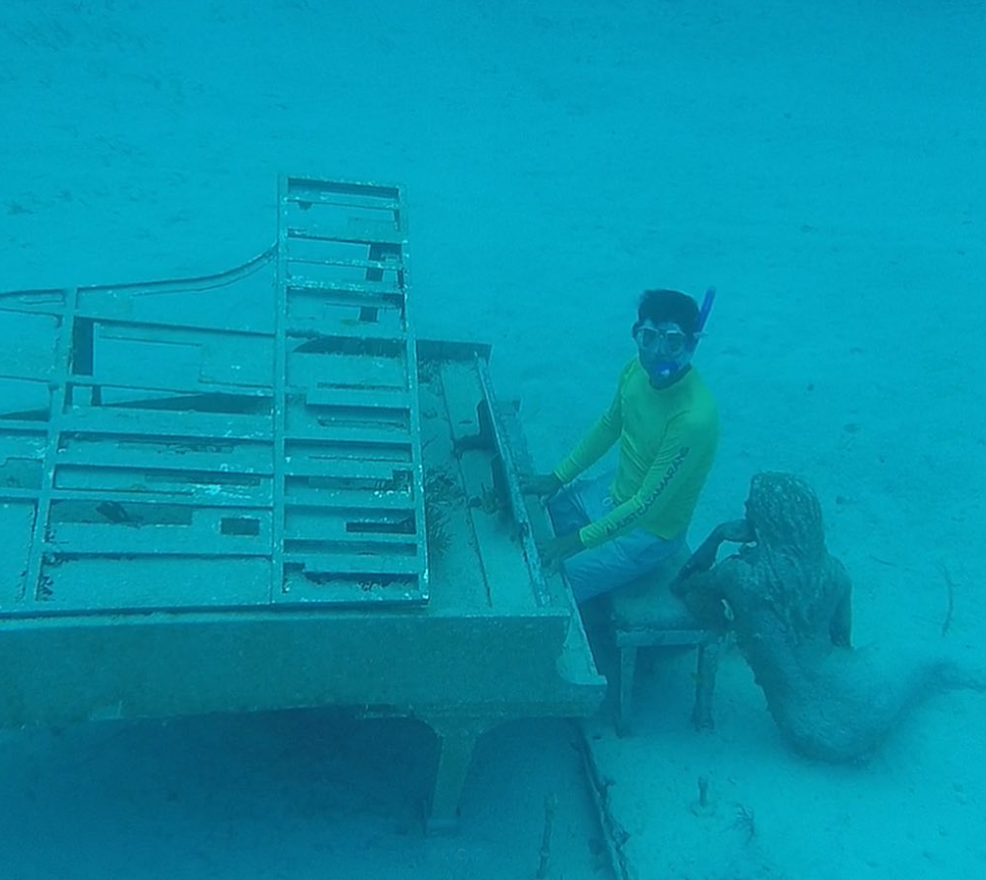
Our Bahamas Waterway Guide provides the exact GPS coordinates, so it was easy to find just south of the Dinghy Garage cave. We went at high tide, making our descent more challenging, but the real problem is that we desperately need to improve our breath holding skills. Despite our limited stamina, we played around the piano for quite awhile. Pictures, at least our very old GoPro 4, don’t do it justice.
Exuma Sound
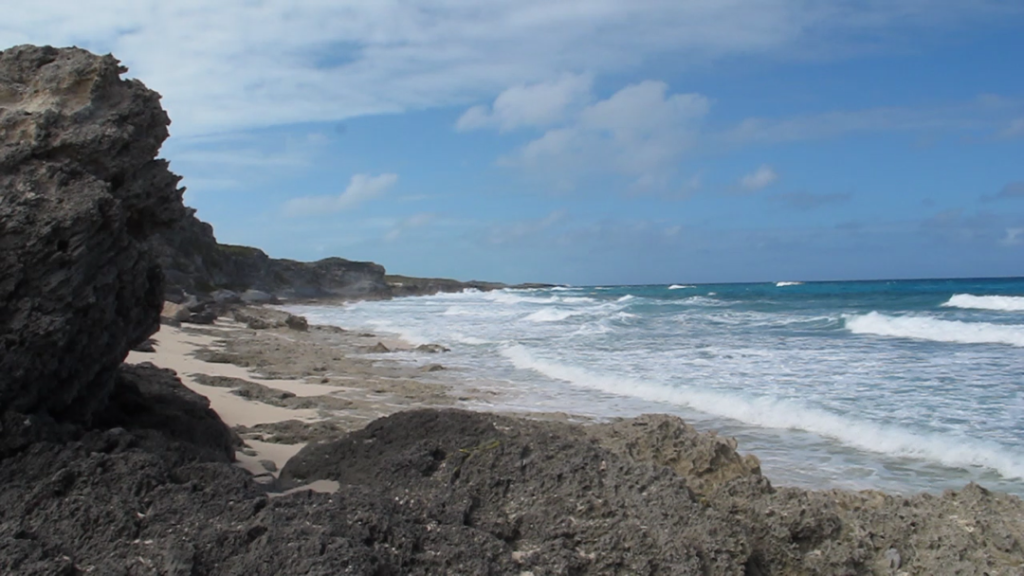
On our last day we hiked to the Exuma Sound side of Rudder Cut Cay. The Exuma Sound has such a different personality. It reminded me of the California coast south of Monterey, with waves crashing against a rugged rock coastline. We explored this area for quite awhile, climbing the rocks and filming the waves from every angle we could manage.
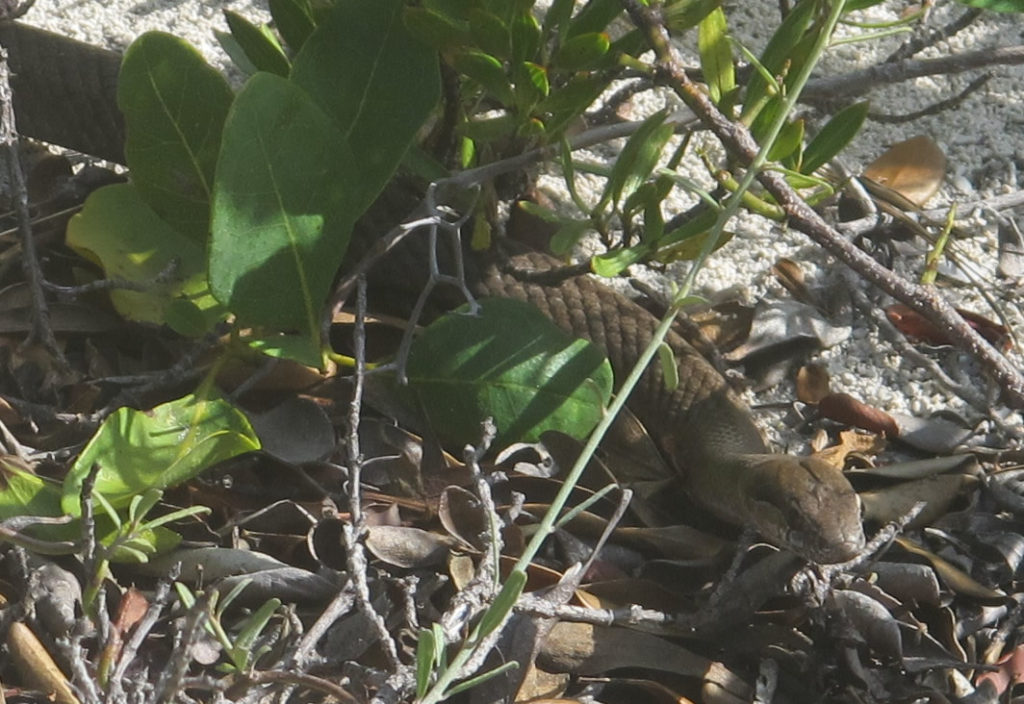
On the hike back to the anchorage, we had a surprise – a snake! I almost stepped on him. There are 5 main types of snakes in the Bahamas, none of which are poisonous. We believe this one was a Bahamian Racer.
Musha Cay
Musha Cay and the Islands of Copperfield Bay comprise 11 private islands totaling 700 acres. The primary resort, with four beach-front villas and a 10,000 sf hilltop house, is located on Musha Cay while the airstrip is located on Rudder Cut Cay. It is reported to begin at $57,000 per night and for up to 24 guests.
Our pictures are necessarily limited, but the official website provides lots of views from inside and above.
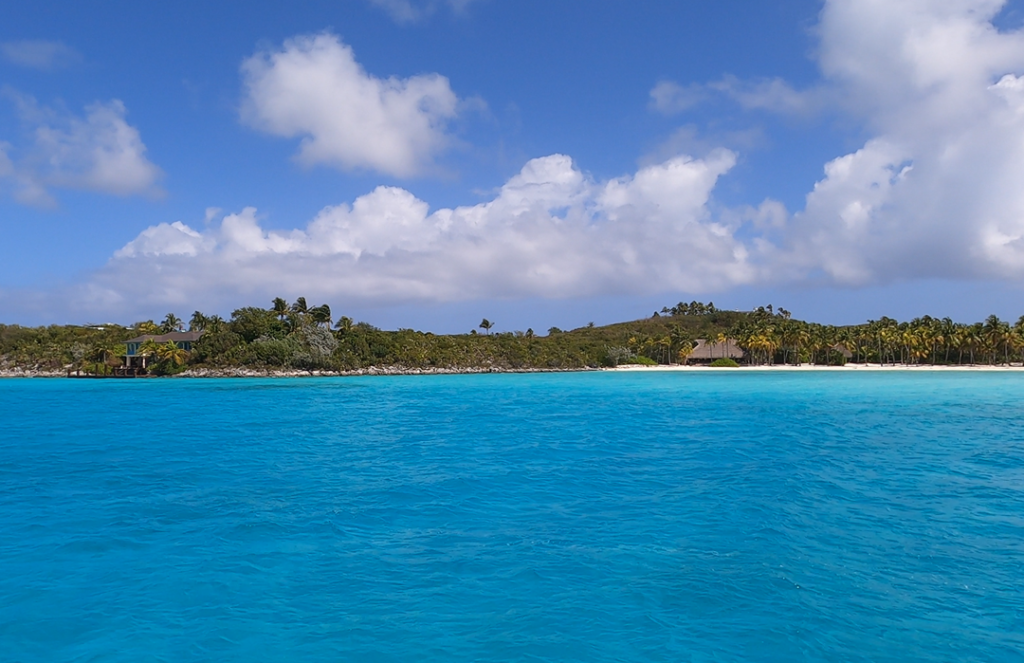
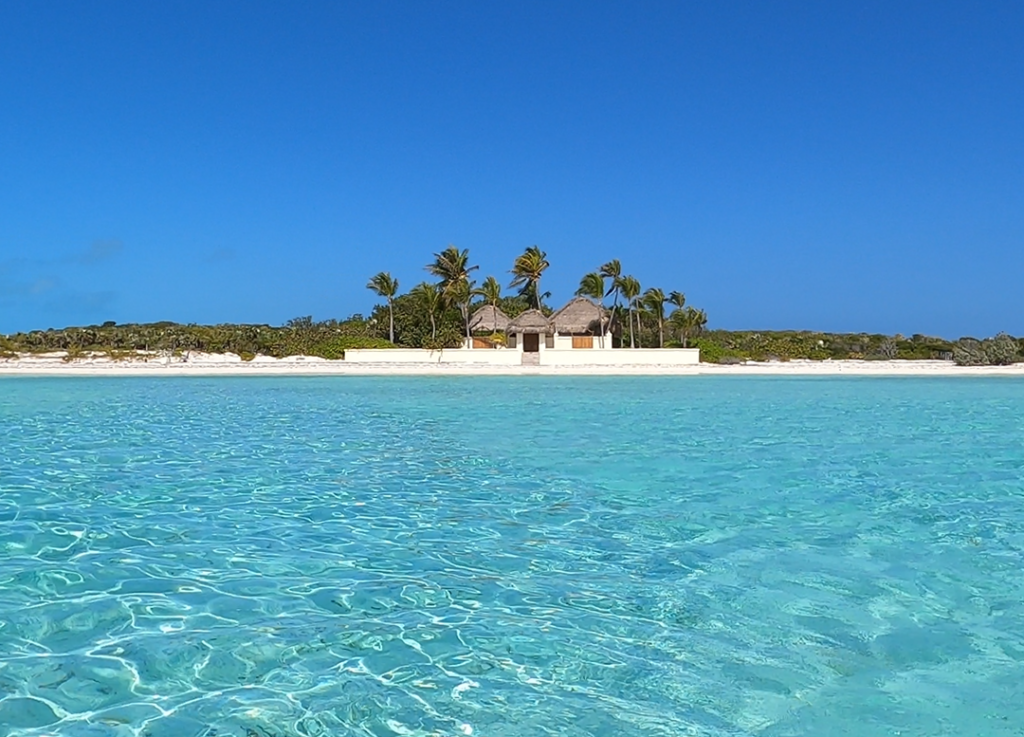
The north end of Rudder Cut Cay forms a large shallow bay with Musha Cay, much of which goes nearly dry at low tide. What we found was hundreds of mounds in the sand, almost like little volcanos, presumably from crabs.
Around on the north side of Musha Cay lies Cave Cay Cut and a large bay. It looked like a great snorkeling area, but we couldn’t find a good place to either beach or anchor the dinghy to find out.
The Darby Islands
To the southeast, on the other side of Rudder Cut, lies Darby Island and Little Darby Island. We waited until the day before the storm (literally) to travel the distance by dinghy and explore the area. This was a day for postcards. No wind, no waves, no clouds, and every color of aqua blue green one could imagine. Surreal when juxtaposed against the fury coming that night.
L’île d’Anges
On the far side of Darby Island, further southeast, is a private 20-acres island that the charts label Goat Cay. It is surrounded by shallow white sandbanks, with white tropical buildings rising above palm tree lined beaches. Even from a distance, it looks magical. To its owners, Tim McGraw and Faith Hill, it’s called L’île d’Anges. They did a tour for Architectural Digest in 2017 that covers most of the details (see Inside Faith Hill and Tim McGraw’s Bahamas Home).
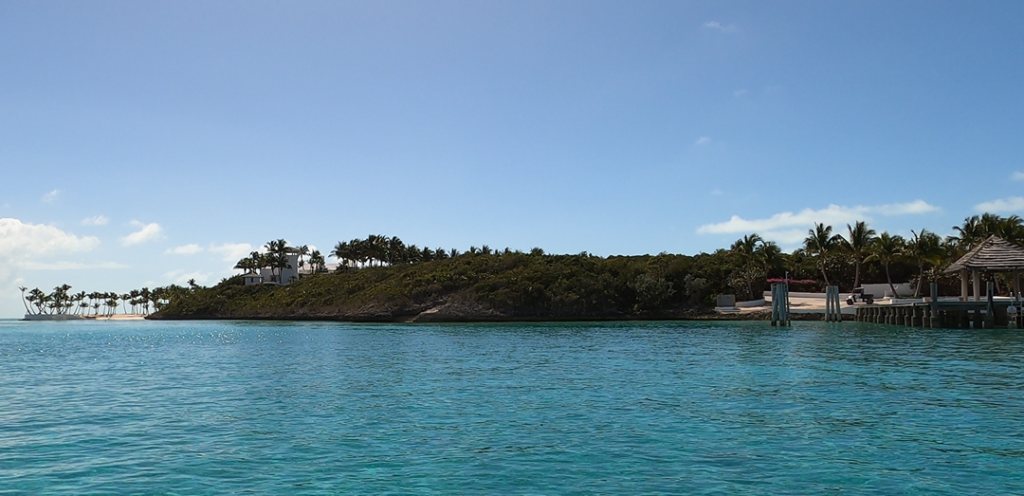
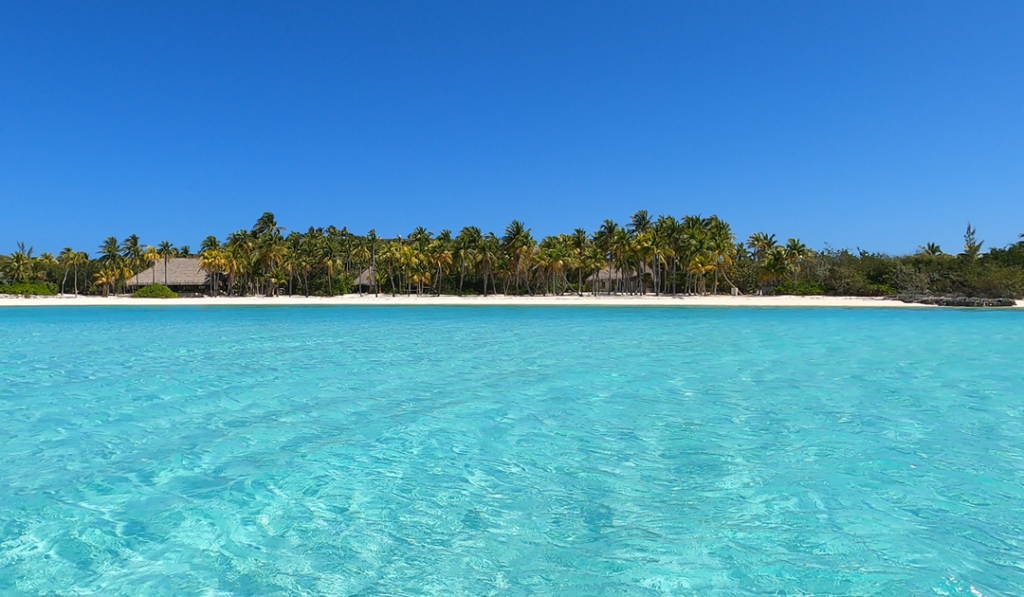
We’ve seen a number of Bahamas private islands owned by the rich and famous. We always asked ourselves – if I had that kind of money, would I spend it on that big rock? The answer was always no. Not this time. This is an amazing tropical oasis. If you have a spare $35 million, it can be yours! It just went on the market (see article in People Magazine).
Rudder Cut
On the way back, we stopped for the best – by far – snorkel we’ve had since arriving in the Bahamas. In the middle of the Bank side of Rudder Cut is a set of tiny islands and rocks. Years of wear have carved a beautiful scene. Behind these, in 10-20 feet of water, is a vast coral garden fed by the constant flow of the cut. You can also go along the largest rock island for a miniature wall dive.
